The 10 Most Fascinating Birds Observed in the DFW Metroplex? An article like this one pretty much has to begin with a few definitions. I apologize, but that’s just the way it is.
For the purpose of this posting we will be considering all native and non-native birds that living free and in the wild. They must have arrived in North Texas of their own volition. Fascinating in this case will refer to a bird that is rarely observed, or one that has arrived in the DFW under unusual circumstances. In addition—or alternatively—an exotic bird will be unique in form, appearance, coloration, or behavior.
That was fun, right? And pretty painless. So, while we are at it lets define another… observed.
In the context of this write up we will consider observed to mean that an encounter with one of these birds was recorded in such as way that it can be considered reliably documented. Pictures from well respected observers and/or news reports are examples of documentations that could suffice. Oh yeah, and no matter how rare and unusual an observation may be, it must be demonstrated as being repeatable to count here—no use sending folks on a wild goose chase, if you know what I mean.
Finally, there is the word wild… We will define wild to mean free-ranging and self-sufficient. Receiving minimal assistance from humans, especially while the animal is here in the DFW metroplex.
Do you guys buy those definitions? Good! Now let’s get on with the list…
10) Reddish Egret
The Reddish Egret is a bird of the Gulf Coast. Every once in a while unusual or timely weather patterns will encourage one these birds into the North Texas area. Reddish Egrets can drop in on the Metroplex at any time of the year. When the perfect combination of events does bring one of these egrets into the Dallas/Fort Worth area, they will usually set down in a remote wetland area and only stay for a few days. There are only a handful of area sightings recorded on ebird.org:
Here is some of what Wikipedia has to say about the Reddish Egret:
The reddish egret (Egretta rufescens) is a medium-sized heron. It is a resident breeder in Central America, The Bahamas, the Caribbean, the Gulf Coast of the United States, and Mexico. There is post-breeding dispersal to well north of the nesting range. In the past, this bird was a victim of the plume trade.
According to the Texas Parks and Wildlife Department, there are only 1,500 to 2,000 nesting pairs of reddish egrets in the United States — and most of these are in Texas. They are classified as “threatened” in Texas and receive special protection.
The reddish egret is considered one of the most active herons, and is often seen on the move. It stalks its prey visually in shallow water far more actively than other herons and egrets, frequently running energetically and using the shadow of its wings to reduce glare on the water once it is in position to spear a fish; the result is a fascinating dance. Due to its bold, rapacious yet graceful feeding behavior, author Pete Dunne nicknamed the reddish egret “the Tyrannosaurus Rex of the Flats”. It eats fish, frogs, crustaceans, and insects. The bird’s usual cry is a low, guttural croak.
9) Swallow-tailed Kite
This elegant little bird of prey may just be the rarest bird found in the metroplex—although for some (exciting) reason sightings seem to be on the increase over the last couple of years. Typically in late summer reports will come in of a single individual observed in far southeast Dallas County. The lone Swallow-tailed Kite will usually be found flying with kettles of Mississippi Kites as they are marshaling for their fall migration.
This past spring Swallow-tailed Kite sightings also started coming in from around the Trinity River in Arlington, Texas. This is a new and exciting development—happening at both a different time of the year AND in a different location than most historical sightings occurring in the Metroplex.
Here is how Wikipedia describes the Swallow-tailed Kite:
The swallow-tailed kite (Elanoides forficatus) is an elanid kite which breeds from the southeastern United States to eastern Peru and northern Argentina. Most North and Central American breeders winter in South America where the species is resident year round. It was formerly named Falco forficatus.
The species is 50 to 68 cm (20 to 27 in) in length, with a wingspan of approximately 1.12–1.36 m (3.7–4.5 ft). Male and female individuals appear similar. The body weight is 310–600 g (11–21 oz).] The body is a contrasting deep black and white. The flight feathers, tail, feet, bill are all black. Another characteristic is the elongated, forked tail at 27.5–37 centimetres (10.8–14.6 in), hence the name swallow-tailed. The wings are also relatively elongated, as the wing chord measures 39–45 cm (15–18 in). The tarsus is fairly short for the size of the bird at 3.3 cm (1.3 in).
Swallow-tailed kites inhabit mostly woodland and forested wetlands near nesting locations. Nests are built in trees, usually near water. Both male and female participate in building the nest.
The swallow-tailed kite feeds on small reptiles, such as snakes and lizards. It may also feed on small amphibians such as frogs; large insects, such as grasshoppers, crickets; small birds and eggs; and small mammals including bats. It has been observed to regularly consume fruit in Central America.[8] It drinks by skimming the surface and collecting water in its beak.
Swallow-tailed kites are not listed as endangered or threatened by the federal government in the United States. They are listed as endangered by the state of South Carolina and as threatened by the state of Texas. They are listed as “rare” by the state of Georgia. Destruction of habitats is chiefly responsible for the decline in numbers. A key conservation area is the Lower Suwannee National Wildlife Refuge in Florida.
8) Mandarin Duck
The Mandarin Duck is native to Asia. They are not supposed to be here in the North America. But due to their strikingly exotic appearance some have been brought to the United States to help “beautify the barnyard.” Every once in a while one of these exotic ducks will make an escape. When they do, they frequently seek out the company of geese, or the closely related and native Wood Duck.
For the past couple of years there have been sightings of a lone male Mandarin Duck in the metroplex during the late winter and early spring. So notable is his arrival each year that area birders have given him the nickname “Manny the Mandarin Duck.” He has been seen in both the City of Irving, and the City of Dallas. Each time Manny has appeared in the Metroplex he has created quite a stir and generated a lot of excitement. By late spring he is gone. Will he will be back next year?
Wikipedia has this to say about the Mandarin Duck:
The mandarin duck (Aix galericulata) is a perching duck species found in East Asia and is native to Japan. It is medium-sized, at 41–49 cm (16–19 in) long with a 65–75 cm (26–30 in) wingspan. It is closely related to the North American wood duck, the only other member of the genus Aix. Aix is an Ancient Greek word used by Aristotle to refer to an unknown diving bird, and galericulata is the Latin for a wig, derived from galerum, a cap or bonnet.
The adult male is a striking and unmistakable bird. It has a red bill, large white crescent above the eye and reddish face and “whiskers”. The breast is purple with two vertical white bars, and the flanks ruddy, with two orange “sails” at the back. The female is similar to female wood duck, with a white eye-ring and stripe running back from the eye, but is paler below, has a small white flank stripe, and a pale tip to its bill.
Both the males and females have crests, but the crest is more pronounced on the male.
Like many other species of ducks, the male undergoes a moult after the mating season into eclipse plumage. When in eclipse plumage, the male looks similar to the female, but can be told apart by their bright yellow-orange beak, lack of any crest, and a less-pronounced eye-stripe.
Mandarin ducklings are almost identical in appearance to wood ducklings, and very similar to mallard ducklings. The ducklings can be distinguished from mallard ducklings because the eye-stripe of mandarin ducklings (and wood ducklings) stops at the eye, while in mallard ducklings it reaches all the way to the bill.
Mandarins feed by dabbling or walking on land. They mainly eat plants and seeds, especially beech mast. The species will also add snails, insects and small fish to its diet. The diet of mandarin ducks changes seasonally; in the fall and winter, they mostly eat acorns and grains. In the spring, they mostly eat insects, snails, fish and aquatic plants. In the summer, they eat dew worms, small fish, frogs, mollusks, and small snakes. They feed mainly near dawn or dusk, perching in trees or on the ground during the day.
7) Wood Stork
Wood Storks come to the Dallas/Fort Worth metroplex just in time for the hottest months of the summer. These large birds can be found singly or in small groups in various places around North Texas, but you have to venture into the darkest reaches of the Great Trinity Forest to find really sizeable congregations.
Wood Storks like to gather in the tallest trees along the river to roost, and they get together to feed in a few especially suitable small lakes situated in the river’s floodplain. By late September most storks will have left the metroplex for their winter haunts.
Here is some of what Wikipedia has to say about the Wood Stork:
The wood stork (Mycteria americana) is a large American wading bird in the stork family Ciconiidae. It was formerly called the “wood ibis”, though it is not an ibis. As of June 26, 2014 it is classified as a threatened species by the U.S. Fish & Wildlife Service.
This is a subtropical and tropical species which breeds in much of South America, Central America and the Caribbean. The wood stork is the only stork that presently breeds in North America. In the United States there is a small breeding population in Florida, Georgia, and South Carolina, along with a recently discovered rookery in southeastern North Carolina. After a successful three-decade conservation effort resulting in an increased population in the southeastern United States, the wood stork was removed from the endangered species list and upgraded to threatened on June 26, 2014. Similarly, in the state of Santa Catarina, Brazil, its decline seems to have been reversed: after an absence between the late 1960s and the mid-1990s, the species is now again regularly encountered there, in particular in the Tubarão River region. It is likely that the Paraná River region’s wetlands served as a stronghold of the species, from where it is now re-colonizing some of its former haunts. Globally, it is considered a species of Least Concern by the IUCN due to its large range.
The wood stork is a broad-winged soaring bird that flies with its neck outstretched and legs extended. It forages usually where lowering water levels concentrate fish in open wetlands; it also frequents paddy fields. Walking slowly and steadily in shallow water up to its belly, it seeks prey, which, like that of most of its relatives, consists of fish, frogs and large insects. It catches fish by holding its bill open in the water until a fish is detected.
In the United States, the wood stork favors cypress trees in marshes, swamps, or (less often) among mangroves and nearby habitat.
A resident breeder in lowland wetlands with trees, the wood stork builds a large stick nest in a forest tree. They nest colonially with up to twenty-five nests in one tree. Breeding once a year, a female typically lays three to five eggs in the clutch. The eggs are incubated 27–32 days by both sexes. Wood storks’ reproductive cycle is triggered when waterholes dry up sufficiently to concentrate fish in sufficient numbers for efficient feeding of the chicks. Each chick weighs approximately 2 oz (57 g), is unable to fly and is helpless. Competition for food is fierce, and if food is scarce, only the older chicks will survive. Week-old chicks are fed about 15 times per day, and grow rapidly. By 14 days, each will weigh 10 times its hatching weight. At 28 days, each is 25 times heavier. During the breeding season, wood storks need over 400 lb (180 kg) of fish to feed themselves and their offspring. When the weather is very warm, parents also collect water and bring it to the nest to drool on and into the mouths of the chicks. By the time the young are four weeks old, both parents leave the nest to search for food, and this continues until the chicks fledge or leave the nest. Young may continue to return to the colony for another 10 to 15 days to roost or to try to get food from their parents. A colony is considered successful if its parents average at least 1.5 fledged young per nest.
Each adult will defend its nest against various predators. corvids, vultures, grackles and striped skunks will attempt to pick off eggs. Raccoons are the leading predator of nests, and can cause almost complete colony nesting failure when water dries under nests in drought years since they can easily access the nest using dry ground under the tree. Adults have few natural predators, but unwary ones have been picked off by American alligators.
6) Brown Pelican
The Brown Pelican is another coastal bird that occasionally finds its way the Dallas/Fort Worth metroplex. These birds can arrive in the North Texas at any time during the year, but sightings are more common in our cooler months. Brown Pelicans are usually seen in the Metroplex alone or in pairs. A few key area reservoirs are the best places to look for these big sea birds.
Here is some of what Wikipedia has to say about the Brown Pelican:
The brown pelican (Pelecanus occidentalis) is a small pelican found in the Americas. It is one of the best known and most prominent birds found in the coastal areas of the southern and western United States. It is one of only three pelican species found in the Western Hemisphere. The brown pelican is one of the only two pelican species which feeds by diving into the water.
The brown pelican is the smallest of the eight species of pelican, although it is a large bird in nearly every other regard. It is 106–137 cm (42–54 in) in length, weighs from 2.75 to 5.5 kg (6.1 to 12.1 lb) and has a wingspan from 1.83 to 2.5 m (6.0 to 8.2 ft). Through most of its range, the brown pelican is an unmistakable bird. Like all pelicans, this species has a very large bill, 28 to 34.8 cm (11.0 to 13.7 in) long in this case, with a gular pouch on the bottom for draining water when it scoops out prey. The head is white but often gets a yellowish wash in adult birds. The bill is grayish overall in most birds, though breeding birds become reddish on the underside of the throat. The back, rump, and tail are streaked with gray and dark brown, sometimes with a rusty hue. In adult pelicans, the breast and belly are a blackish-brown and the legs and feet are black. The juvenile is similar but has a brownish-gray neck and white underparts.
This bird is readily distinguished from the American white pelican by its non-white plumage, smaller size and its habit of diving for fish from the air, as opposed to co-operative fishing from the surface. The Peruvian pelican, previously considered a subspecies of brown pelican, is now considered to be a separate species. It has very similar plumage to the brown, but it is noticeably larger. The brown and Peruvian pelicans may overlap in some areas along the Pacific coast of South America.
5) Golden Eagle
So, has the Golden Eagle ever really be observed in the Dallas/Fort Worth metroplex? That is a question that is still up for debate. The website eBird shows a small number of reported sightings in and around DFW. But, because we are at the very eastern limits of the Golden Eagle’s range, reports that do not include a photograph have to be viewed with a certain level of skepticism. So too of similar reports from east of the metroplex.
Sightings recorded west of Fort Worth are another story altogether. These are much more likely to be accurate—especially the further west you go.
Finally, there is a reliable report—complete with a diagnostic photograph— taken on Lake Texhoma just a few years ago. This big lake is located on the Texas-Oklahoma border, and is just a short distance from the Metroplex.
Whatever the case, I think the Golden Eagle is a raptor worth keeping an eye out for when birding in the metroplex—just in case!
Wikipedia reports on the Golden Eagle in this way:
The golden eagle (Aquila chrysaetos) is one of the best-known birds of prey in the Northern Hemisphere. It is the most widely distributed species of eagle. Like all eagles, it belongs to the family Accipitridae. These birds are dark brown, with lighter golden-brown plumage on their napes. Immature eagles of this species typically have white on the tail and often have white markings on the wings. Golden eagles use their agility and speed combined with powerful feet and massive, sharp talons to snatch up a variety of prey (mainly hares, rabbits, marmots and other ground squirrels).
Golden eagles maintain home ranges or territories that may be as large as 200 km2 (77 sq mi). They build large nests in high places (mainly cliffs) to which they may return for several breeding years. Most breeding activities take place in the spring; they are monogamous and may remain together for several years or possibly for life. Females lay up to four eggs, and then incubate them for six weeks. Typically, one or two young survive to fledge in about three months. These juvenile golden eagles usually attain full independence in the fall, after which they wander widely until establishing a territory for themselves in four to five years.
Once widespread across the Holarctic, it has disappeared from many areas which are now more heavily populated by humans. Despite being extirpated from or uncommon in some of its former range, the species is still fairly ubiquitous, being present in sizeable stretches of Eurasia, North America, and parts of North Africa. It is the largest and least populous of the five species of true accipitrid to occur as a breeding species in both the Palearctic and the Nearctic.
For centuries, this species has been one of the most highly regarded birds used in falconry, with the Eurasian subspecies having been used to hunt and kill prey such as gray wolves (Canis lupus) in some native communities. Due to its hunting prowess, the golden eagle is regarded with great mystic reverence in some ancient, tribal cultures. The golden eagle is one of the most extensively studied species of raptor in the world in some parts of its range, such as the Western United States and the Western Palearctic.
4) Roseate Spoonbill
Roseate Spoonbills can often be found in the same places and under the same circumstances as Wood Storks in North Texas. The stunning and exotic Roseate Spoonbill is considered a vagrant and is at the northern limits of its range in the Dallas/Fort Worth area. The summer months are when our spoonbills are in town—often sporting the bright pinks and crimsons of their breeding plumage. Remote areas along the Trinity River with shallow lakes rich in invertebrate life are the places to find these birds in sizable numbers.
Here is some of what Wikipedia has to say about the Roseate Spoonbill:
The roseate spoonbill is 71–86 cm (28–34 in) long, with a 120–133 cm (47–52 in) wingspan and a body mass of 1.2–1.8 kg (2.6–4.0 lb).[6] The tarsus measures 9.7–12.4 cm (3.8–4.9 in), the culmen measures 14.5–18 cm (5.7–7.1 in) and the wing measures 32.3–37.5 cm (12.7–14.8 in) and thus the legs, bill, neck and spatulate bill all appear elongated.[7] Adults have a bare greenish head (“golden buff” when breeding) and a white neck, back and breast (with a tuft of pink feathers in the center when breeding), and are otherwise a deep pink. The bill is grey. There is no significant sexual dimorphism.
Like the American flamingo, their pink color is diet-derived, consisting of the carotenoid pigment canthaxanthin. Another carotenoid, astaxanthin, can also be found deposited in flight and body feathers. The colors can range from pale pink to bright magenta, depending on age and location. Unlike herons, spoonbills fly with their necks outstretched. They alternate groups of stiff, shallow wingbeats with glides.
This species feeds in shallow fresh or coastal waters by swinging its bill from side to side as it steadily walks through the water, often in groups. The spoon-shaped bill allows it to sift easily through mud. It feeds on crustaceans, aquatic insects, frogs, newts and very small fish ignored by larger waders. In the United States, a popular place to observe roseate spoonbills is “Ding” Darling National Wildlife Refuge in Florida. Roseate spoonbills must compete for food with snowy egrets, great egrets, tricolored herons and American white pelicans.
3) Whooping Crane
The unmistakable Whooping Crane is the tallest bird in North America—and also one of the rarest. These large birds winter on the Texas Gulf Coast, and summer in the far reaches of northern Canada to breed. This jet set lifestyle necessitates a long migration each spring and fall.
These seasonal journeys offer people in North Texas the best opportunity for viewing Whooping Cranes. On occasion they can be seen flying high over the metroplex on their trip to or from the Gulf Coast. But it is not easy to notice white birds flying at altitude—it takes a sharp eye.
Even more rarely, a group of Whooping Cranes might touch down momentarily in a North Texas wetland to rest, eat, and drink. You literally have to be in the right place at the right time to observe cranes in this situation.
Because Whooping Cranes are considered endangered—with less than 450 individuals remaining in the wild—there is much concern about their tenuous numbers. Reintroduction efforts are ongoing in Louisiana which are designed to create a separate population of cranes to help guard against disaster.
Young birds from this group remain driven to migrate seasonally, though they are not quite sure where to go or how to accomplish the mission. Still, some of them try, and over the last couple of years a small number of these cranes have found their way to the metroplex, where they have been apt to stay for the summer. This phenomenon provides one more way an intrepid observed might get to view a rare Whooping Crane here in the DFW Metroplex.
- Whooping Crane sightings in and around Dallas/Fort Worth – ebird.org
- Whooping Cranes | Louisiana Department of Wildlife and Fisheries
- https://www.facebook.com/lawhoopingcranes/
Here is some of what Wikipedia has to say about the Whooping Crane:
The whooping crane (Grus americana), the tallest North American bird, is an endangered crane species named for its whooping sound. In 2003, there were about 153 pairs of whooping cranes. Along with the sandhill crane, it is one of only two crane species found in North America. The whooping crane’s lifespan is estimated to be 22 to 24 years in the wild. After being pushed to the brink of extinction by unregulated hunting and loss of habitat to just 21 wild and two captive whooping cranes by 1941, conservation efforts have led to a limited recovery. As of 2011, there are an estimated 437 birds in the wild and more than 165 in captivity.
The whooping crane (Grus americana), the tallest North American bird, is an endangered crane species named for its whooping sound. In 2003, there were about 153 pairs of whooping cranes. Along with the sandhill crane, it is one of only two crane species found in North America. The whooping crane’s lifespan is estimated to be 22 to 24 years in the wild. After being pushed to the brink of extinction by unregulated hunting and loss of habitat to just 21 wild and two captive whooping cranes by 1941, conservation efforts have led to a limited recovery. As of 2011, there are an estimated 437 birds in the wild and more than 165 in captivity.
The species can stand up to 1.5 meters (4.9 feet) and have a wingspan of 2.3 meters (7.5 feet). Males weigh on average 7.3 kg (16 lb), while females weigh 6.2 kg (14 lb) on average (Erickson, 1976). The body length averages about 132 cm (52 in). The standard linear measurements of the whooping cranes are a wing chord length of 53–63 cm (21–25 in), an exposed culmen length of 11.7–16 cm (4.6–6.3 in) and a tarsus of 26–31 cm (10–12 in). The only other very large, long-legged white birds in North America are: the great egret, which is over a foot shorter and one-seventh the weight of this crane; the great white heron, which is a morph of the great blue heron in Florida; and the wood stork. All three other birds are at least 30% smaller than the whooping crane. Herons and storks are also quite different in structure from the crane.
Their calls are loud and can carry several kilometers. They express “guard calls”, apparently to warn their partner about any potential danger. The crane pair will jointly call rhythmically (“unison call”) after waking in the early morning, after courtship and when defending their territory. The first unison call ever recorded in the wild was taken in the whooping cranes’ wintering area of the Aransas National Wildlife Refuge during December 1999 and is documented here
2) Snowy Owl
The Snowy Owl is a bird of the arctic and the far north. Every now and again, for reasons that are not well understood, some of these birds will come further south than what is ordinary during our winter months. On rare occasions, this phenomenon will bring Snowy Owls into North Texas.
In February of 2012 we actually had one of these stunning birds in the Dallas/Fort Worth Metroplex. First spotted at Lake Ray Hubbard, the lone Snowy Owl was observed for several consecutive days before it finally moved on. The owl was then seen again briefly and photographed near downtown Dallas. After a short stay in the Metroplex of just around 25 days, the Snowy Owl disappeared without a trace.
- Snowy Owl sightings in and around Dallas/Fort Worth – ebird.org
- Dallas officer spots rare snowy owl at Lake Ray Hubbard – Dallas Morning News
- Snowy Owl Sighting Dallas TX – YouTube
Here is how Wikipedia described the Snowy Owl:
The snowy owl (Bubo scandiacus) is a large, white owl of the typical owl family. Snowy owls are native to Arctic regions in North America and Eurasia. Younger snowy owls start with a darker plumage, which turns lighter as they get older. Males are almost all white, while females have more flecks of gray plumage.
The snowy owl is typically found in the northern circumpolar region, where it makes its summer home north of latitude 60° north. However, it is a particularly nomadic bird, and because population fluctuations in its prey species can force it to relocate, it has been known to breed at more southerly latitudes. During the last glacial, there was a Central Europe Bubo scandiacus gallicus, but no modern subspecies are recognized.
This species of owl nests on the ground, building a scrape on top of a mound or boulder. A site with good visibility is chosen, such as the top of a mound with ready access to hunting areas and a lack of snow. Gravel bars and abandoned eagle nests may be used. The female scrapes a small hollow before laying the eggs. Breeding occurs in May to June, and depending on the amount of prey available, clutch sizes range from 3 to 11 eggs, which are laid singly, approximately every other day over the course of several days. Hatching takes place approximately five weeks after laying, and the pure white young are cared for by both parents. Although the young hatch asynchronously, with the largest in the brood sometimes 10 to 15 times as heavy as the smallest, there is little sibling conflict and no evidence of siblicide. Both the male and the female defend the nest and their young from predators, sometimes by distraction displays. Males may mate with two females that may nest about a kilometre apart. Some individuals stay on the breeding grounds while others migrate.
1) Purple Gallinule
The beautifully colored Purple Gallinule is a rare bird indeed! These stunning birds can occasionally be found in the Dallas/Fort Worth metroplex during the warmest months of spring and summer. They prefer wetland environments with abundant floating vegetation—those oversized feet help distribute weight and allow the Purple Gallinule to walk across buoyant vegetation, like lily pads, without sinking.
There have only been a few documented sightings of Purple Gallinules in DFW over the years, each occurring in a very localized area. The list of places to look for these birds here in North Texas is very long, but this list of places where they have actually been found is very short. Only a few lucky ones will ever get to see this bird in the Dallas/Fort Worth area!
Wikipedia has this to say about the Purple Gallinule:
The purple gallinule (Porphyrio martinicus) is a “swamp hen” in the rail family, Rallidae. Also known locally as the yellow-legged gallinule. The genus name Porphyrio is the Latin for “swamphen”, and martinica is “of Martinique”.
This is a medium-sized rail, measuring 26–37 cm (10–15 in) in length, spanning 50–61 cm (20–24 in) across the wings and weighing 141–305 g (5.0–10.8 oz). Males, averaging 257 g (9.1 oz) in mass, are slightly larger than females, at 215 g (7.6 oz) on average.[6] The adult purple gallinule has big yellow feet, purple-blue plumage with a green back, and red and yellow bill. It has a pale blue forehead shield and white undertail. Darkness or low light can dim the bright purple-blue plumage of the adult to make them look dusky or brownish, although the forehead shield color differentiates them from similar species such as common gallinules.
Juveniles are brown overall with a brownish olive back. These gallinules will fly short distances with dangling legs.
Their breeding habitat is warm swamps and marshes in southeastern states of the United States and the tropical regions of Central America, the Caribbean and northern South America. This species is resident in southern Florida and the tropics, but most American birds are migratory, wintering south to Argentina.
The nest is a floating structure in a marsh. Five to ten eggs are laid. Their coloration is buff with brown spots.
They are omnivorous – their diet being known to include a wide variety of plant and animal matter, including seeds, leaves and fruits of both aquatic and terrestrial plants, as well as insects, frogs, snails, spiders, earthworms and fish. They have also been known to eat the eggs and young of other birds.
This species is a very rare vagrant to western Europe and southwestern Africa. There is a similarly named species in Europe, Asia and Africa, the purple swamphen, Porphyrio porphyrio, but that bird is much larger.
Ok, so that is our list of the 10 most fascinating birds observed in the Dallas/Fort Worth metroplex… Do you agree? Do you disagree? Let us know in the comment section below.
And of course, if you come across any of these rare and/or unique birds, we would love to hear about your encounter! Drop us an email!
Finally, there is a mile long list of also rans… I include it here as fuel for the debate. What are your thoughts?
Also Rans
- American Avocet
- American Bittern
- American Goldfinch
- Anhinga
- Bald Eagle
- Baltimore Oriole
- Belted Kingfisher
- Black-bellied Whistling Duck
- Black-necked Stilt
- Bonaparte’s Gull
- Burrowing Owl
- Chuck-Will’s-Widows
- Common Goldeneye
- Common Loon
- Common Merganser
- Common Moorhen
- Crested Caracara
- Eared Grebe
- Evening Grosbreak
- Ferruginous Hawk
- Fulvous Whistling Duck
- Glaucous Gull
- Glossy Ibis
- Goldeneye
- Greater White-fronted Goose
- Harris Hawk
- Herring Gull
- Hooded Merganser
- Horned Grebe
- Hudsonian Godwit
- Inca Dove
- King Rail
- Least Tern
- Lesser Black-backed Gull
- Long-tailed Duck
- Monk Parakeet
- Mute Swan
- Northern Bobwhite
- Northern Pintail
- Orchard Oriole
- Painted Bunting
- Peregrine Falcon
- Pileated Woodpecker
- Pyrrhuloxia
- Red-breasted Merganser
- Red-necked Grebe
- Ross’s Goose
- Sandhill Crane
- Short-eared Owl
- Snow Goose
- Sora
- Summer Tanger
- Tri-colored Heron
- Virginia Rail
- Wilson’s Phalarope
- White-faced Ibis
- White-tailed Kite
- White Ibis
- Wild Turkey
- Willet
- Wood Duck
- Sabine Gull
- Yellow-chevroned Parakeet
- Yellow-headed Blackbird



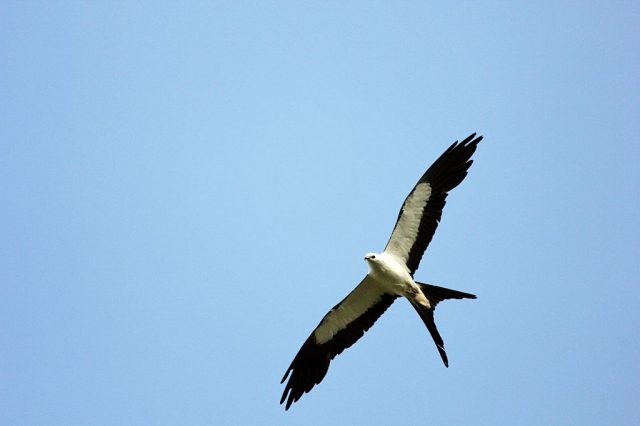


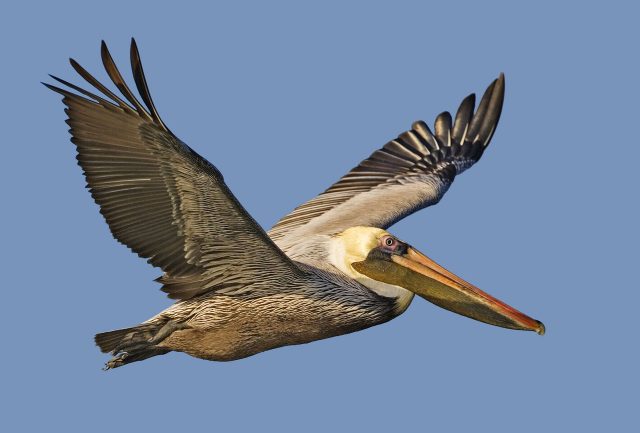
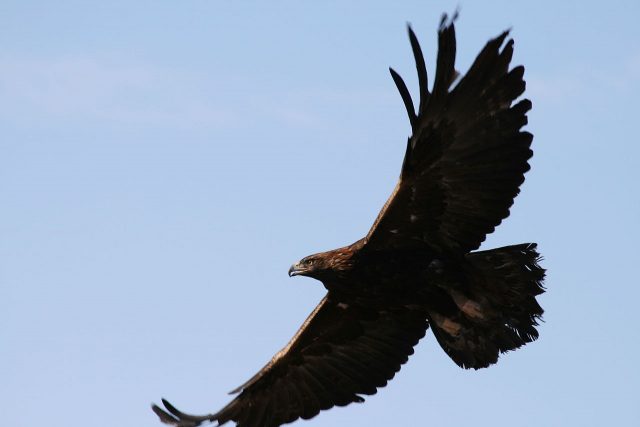

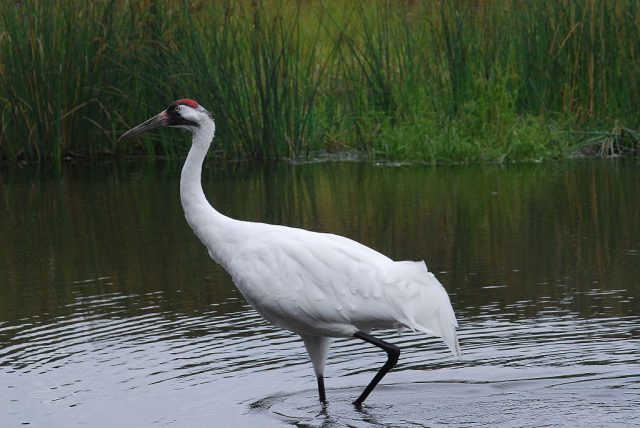

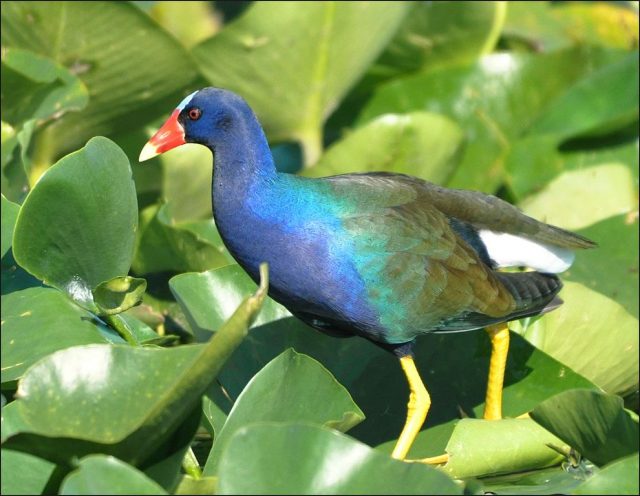

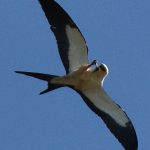
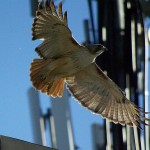
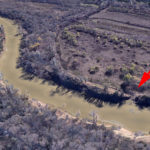

Monk parakeet, American goldfinch, and Belted kingfisher are not rare in my experience.If you feed niger seed in winter, you will have swarms of goldfinch and pine siskins. There are many colonies of monk parakeets in the metroplex at electric substations. And I can predictably find kingfishers in Las Colinas at the golf course and local small ponds.
Not rare… but maybe exotic?
We have a Roadrunner that has been in our subdivision for over 2 yrs. now, feasting on Gekos, snakes,
and large lizards….I hope he doesn’t leave our area (Oak Point, TX 75068). He/she is getting used to humans now and has been seen sitting on my windowsill with a snake in his/her mouth. Sure hope
he/she doesn’t leave. Wonder where they go during winter???
They are still around in the winter, but the bugs and snakes are not! Share pictures, if you’d like, on our facebook group… I know everyone would like to see them!
https://www.facebook.com/groups/726012804182335/
I’m pretty sure we saw a Golden Eagle today! We live on a small lake in Arlington & my neighbor sent a video to me of a dark blob in her tree, it was too far away to tell what it was. She thought it was a Bald Eagle. Later she called & said it had flown into my yard. I went out & it was flying overhead. It looked like your picture! I’m sure it wasn’t a vulture as we have those around & know those right away. Wish it would come pose for a really good pic!!
I take it all back! My neighbor DID see a Bald Eagle in her yard & she just sent me very good pictures of it. Is it possible that I saw the female?
Adult male and female Bald Eagles look alike. Juvenile Bald Eagles are nearly dark all over and can resemble Golden Eagles.
Thoroughly enjoyed this article. We have acreage within the city of Lewisville and have a picture of an anhinga visiting our pond.
I just recently became interested in bird sightings.My wife and leave birdseed outside so we can watch all the different types.The usual , doves, bluejays, cardinals and a woodpecker with red on the back of it’s head.Told you I was a beginner. But Tuesday when I took out the trash the weirdest bird was walking across my driveway. Big brown body,compared to it’s head,long slender slightly curved beak.But strangest way of bobbing back and forth, not just the head but all of it.Never stopped this constant movement.Slow and rhythmic motion never stopped even when it saw me coming.Looked it up,think it was a Curlew, closest I could find by photos.But here in Arlington? Said to be in Siberia and Arctic regions.Could the cold from last week have anything to do with it.Or is it not that uncommon to our area.Thanks